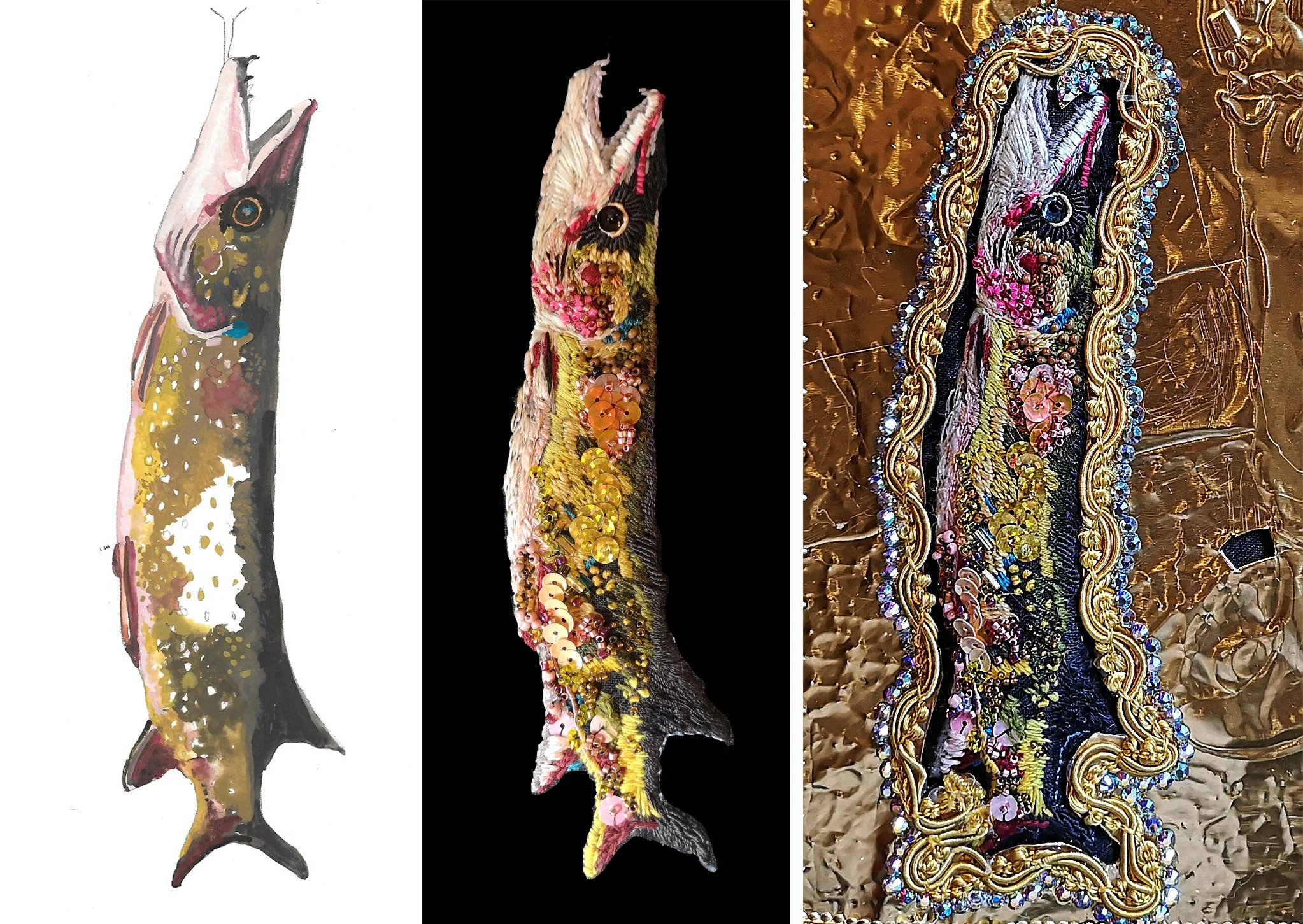2021
Babushka as Icon - Research through Practice and the Importance of the Sketchbook
KEY WORDS: textiles, embroidery, craft, relationships, religious culture, legacy, practice-led, design, everyday, Chernobyl
As a textile practitioner and researcher, through a co-design methodology which draws on auto-ethnography, I investigate the embroidery practices of an obsolescent community - the Babushkas of Chernobyl. By contemporising their artefactual textile heritage their voices can be heard and their stitched legacy preserved. New audiences are encouraged to respond to and engage with the resulting artworks and new narratives.
This extended photo essay is a personal reflection on the links between theory, fieldwork and practice, how each informs the other and is of equal importance. Its focus is a body of work that has developed through the process of making and thinking through craft. Artworks reflect the depth of my relationships with the Babushkas and how I reconnected with them emotionally through making, during the long period of separation enforced by a global pandemic.
A reflective approach is evidenced by extracts from a sketchbook, an illustrated rationale of my thought process showing how my making links to both primary and secondary research. Reflective practice incorporating tacit knowledge has its own rigour and validity and the sketchbook acts as a record of this. Through the act of making, feeling and manipulating the materials, seeing what happens and what you can do, the creating of an artefact becomes magical. You are awarded intense thinking time, so enjoyable not to be noticed until, you are suddenly aware of a million different things to try.
I make work with the Babushkas, about them, of them and for them. Craft is a way of doing things, a process of improvisation, about working with materials and valuing that experience, craft includes emotion and making generates new ideas (Adamson, 2018).







